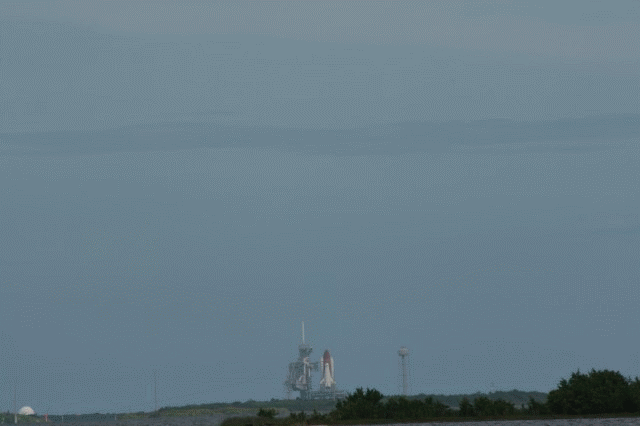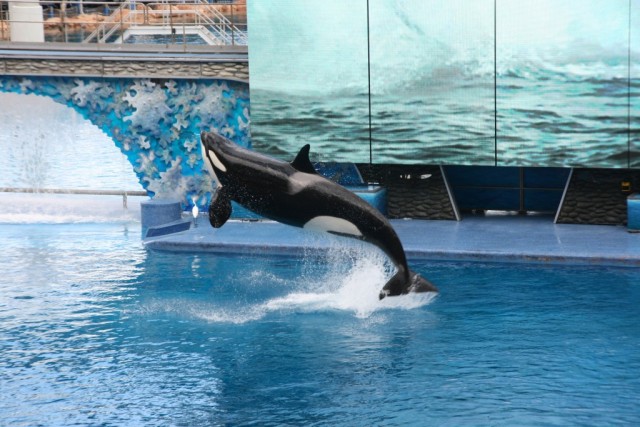The missing management team at NASA will have a very tough day today. As far as I know, a series of meetings have already begun. They are all about the ECO sensor issue – and how to proceed. It is hard to predict the outcome.
Let’s try to put some pieces together. Keep in mind that all of this is my personal guesswork. So tomorrow you may judge me based on what actually happens (hey, will I really do that…?).
From a technical point of view, it looks like the sensor issue can not be fixed quickly enough. The fact that there are intermittent problems in at least three (all four?) sensors makes it look like a problem with the electronics or cabling – not the sensors themselves. Fixing that would require at least three days at the pad – if it can be done there at all. Some think that a rollback is necessary. Troubleshooting the sensor system would best be done by a tanking test. However, that test has been called off by NASA in favor of consumables replenishment. To me, this is an indication that NASA has given up on fixing the ECO sensor system. In the press conference, they also mentioned that they are looking into rationale to fly as is. That also supports my argument.
But stop. Don’t say “better save than sorry”. Of course crew safety is first. But then remember that the ECO sensors are part of a backup system that kicks in when some other things already went wrong. They prevent the space shuttle main engines from running dry. So what? Do you think NASA puts not enough fuel into the tank? Obviously that isn’t the case. There is more than enough fuel in the tank for launch. So for the tank to run dry, something must be working quite wrong in the first place. Something like a leak or a similar serious issue. That’s an important point: the ECO sensors are an additional line of defense, but one that is never used in a normal flight. But, then, of course there is a reason for them to being there.
No let’s look at program constraints. If STS-22 can not make this launch window, it is not catastrophic, but will cause a wiggle in the schedule. Quite one, I think. That would cause already-much delayed international space station construction to be delayed even further. It will possibly also affect Constellation and Ares if the STS-125 hubble service mission must be moved. Pad 39B can only be handed over to Ares after the mission, because the STS-125 rescue launch-on-need mission needs to be at a pad to be able to launch it soon enough in case it is needed. So both pads are needed whenever STS-125 launches.
I guess there are also ISS constraints. We already know that construction is much delayed. Guess what? Space hardware has an expiry date. For example, the Columbus module that shall now be delivered by Atlantis is made to endure ten years in orbit. Of course, everyone hopes it will last longer. But its a simple fact: the longer hardware is in space, the less lifespan remains. Now think about all those years that other ISS components are already up there in space – waiting for the construction to finally complete. And every space ship is only as strong as its weakest part. May it be that any delay shrinks the time the ISS as whole can be productive in space (right now, its not really productive – much maintenance and construction going on and few science). Of course, a one month launch slip won’t hurt. But any larger delay will.
There is probably also one other risk with delaying the flight: if the ISS crew has to carry out vital tasks during STS-122 docked operations, their skills will fade. Astronauts are extremely well trained. But it is for a good reason that the practice until the last moment. Practicing at the ISS is rather limited. So the longer it takes, the less well-prepared the crew is. Of course, I do not know that really is an issue at this time. With STS-120, it was a very vital concern, because of all the complex staging spacewalks required by the ISS crew.
Think about it: it is not “just” the shuttle crew that must be kept save. There are also others (I have to admit that I too often overlooked that part of the picture).
As I said, its a tough decision…
Even if they launch as is, I do not think that the space shuttle’s crew life is more at risk than at any other launch (remember: spaceflight *is* a risky business). However, if something goes wrong and NASA needs to rely on the sensors, they will probably use ultra-conservative procedures. At least this is what I would expect. Thus, a launch abort would be much more likely.
And now think what happens if there is TAL (Transatlantic Abort Landing). First of all, it would be expensive. But even worse, how would the public react? Wouldn’t that be the last nail in NASA’s space shuttle program (and probably Constellation as well)? So there is a high risk in that, too. At least from an overall program perspective.
There are also political implications. Especially in this mission. Atlantis carries the European Columbus module into space. That cost roughly a billion (!) dollars. I guess the ESA would not be very amused if Columbus would be damaged due to some launch failure. Please note that I do not talk of a catastrophic failure, but of an abort, which can cause harm anyway. Given the fragile relationship between NASA and ESA, there is obviously some political thought that must be involved in the decision making.
I hope you by now have gotten an idea how many things and details need to be considered. I am sure I am still just scratching on the surface. The bottom line is that none of us outsiders will be in the position to judge it correctly. We should remind ourselves about that when we talk about the final mission management team decision.
Also, we do not have any solid data. The most important thing missing is probabilities. How probable is it that the ECO sensors are actually needed – I mean that the tank really runs dry? Is it 1 in 5,000? Or 1 in 100? The former one is probably a risk that can be accepted (the debris hit probability is much higher) while the later one obviously draws a different picture. Without solid data, you can not decide.
The whole situation looks much like the RCC panel issue we had with STS-120. However, at that time there was some more solid data at the time of decision making.
This is what the meetings are currently about: gathering data, looking at options and then deciding on what is the best thing to do after everything is put together. Such a decision, whatever it may be, easily upsets some folks (us, maybe?) who do not have the full reasoning at hand. I personally trust NASA guys to do the right thing. These are very bright people, doing a tremendous job in a very unforgiving business.
But would is my personal bet? I promised to do one… Tough, really tough. If I had to decide with just the information that is in this post… Well, I would probably fly as is on Saturday. Am I having launch fewer? Judge yourself. Here is my line of defense:
- The ECO sensors are “just” a second line of defense. Something else must go seriously wrong in order to need them.
- During launch, crew and mission control can manually monitor ECO sensor performance. If the show dry early into flight, this must be a failure. I admit that it gets harder the later we go into flight.
- If an abort is needed, there are established procedures and no catastrophic outcome is to be expected. However, the shuttle program and NASA itself would probably pay a big price. That risk is accepted.
- The launch and construction schedule can be maintained.
- The risk for the ISS crew is minimized
If I look at my arguments, number one and two are the strongest one. If looking from a political point of view, you may also come to the decision to postpone to avoid the program risk. And, of course, depending on probabilities, you would like to avoid a lunch because of crew safety risks. But now I am spinning in circles ;)
I’ve done my bet, now let’s see what the real outcome is.





